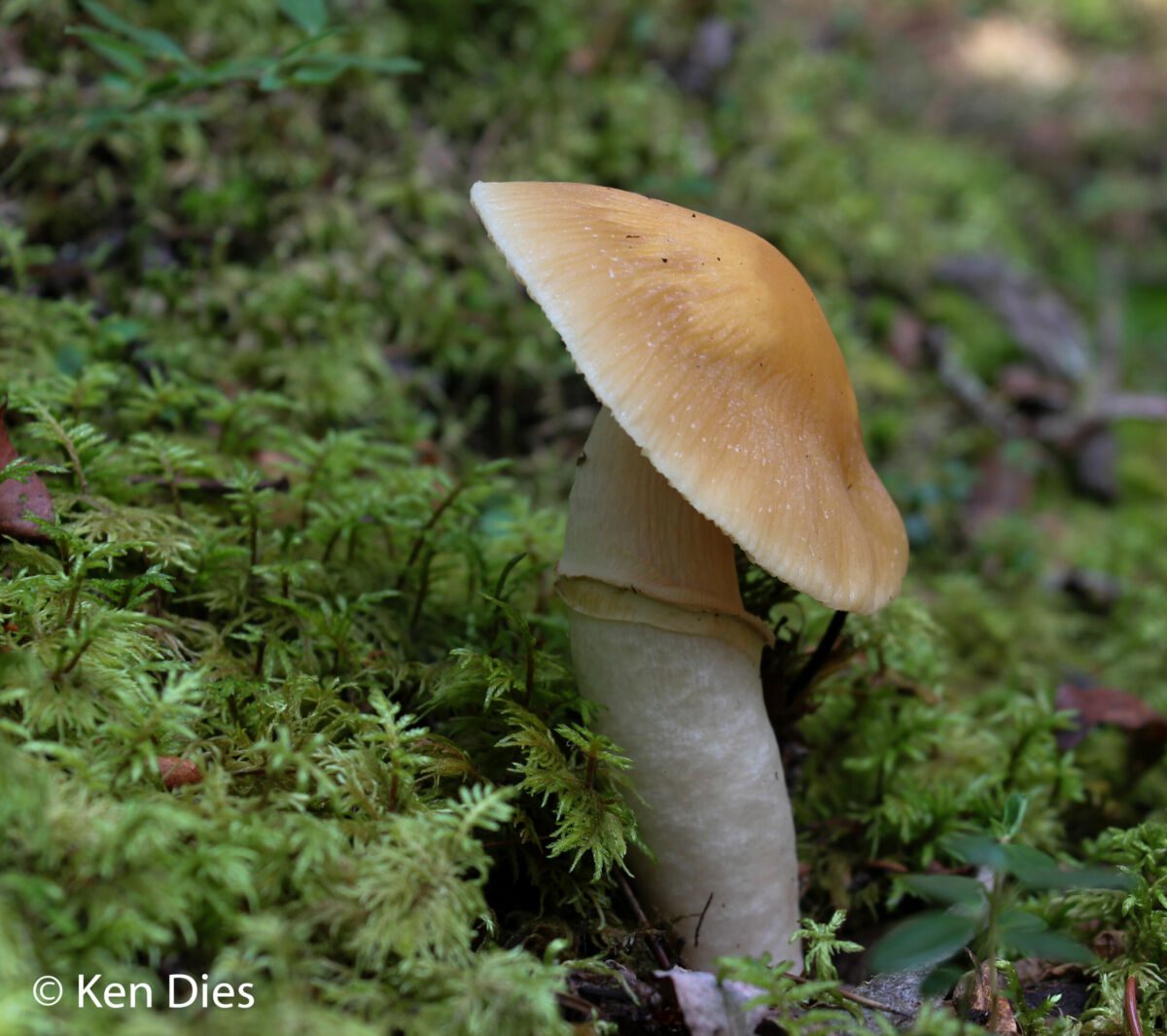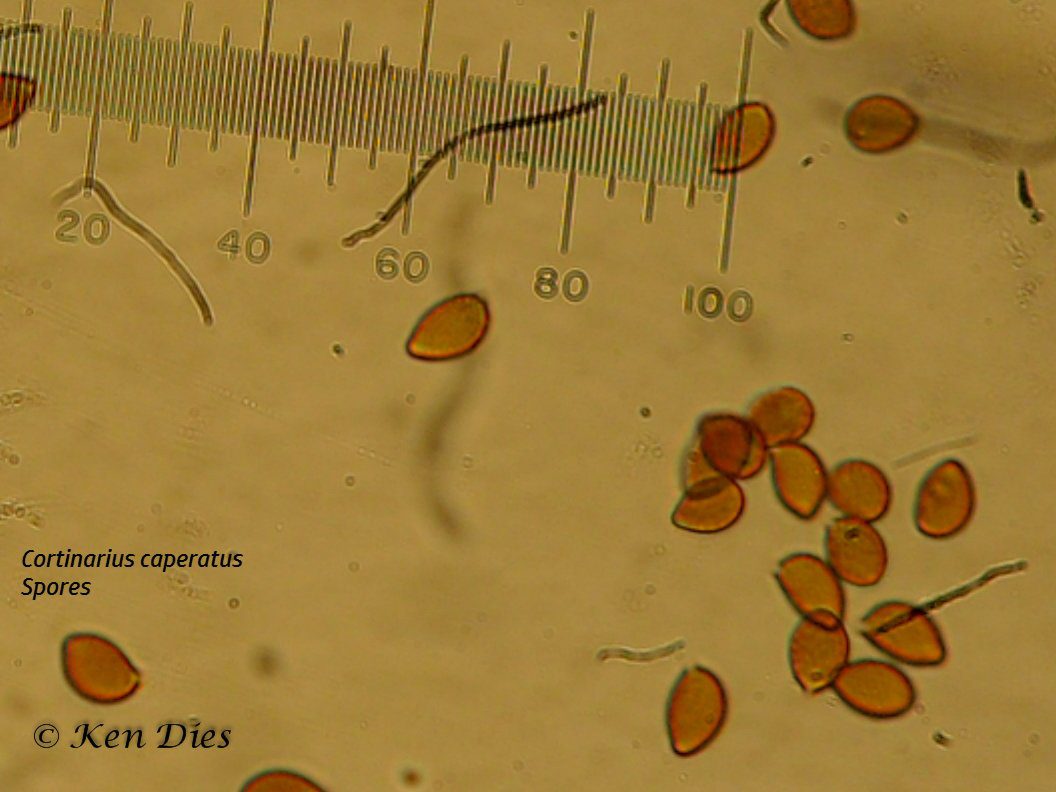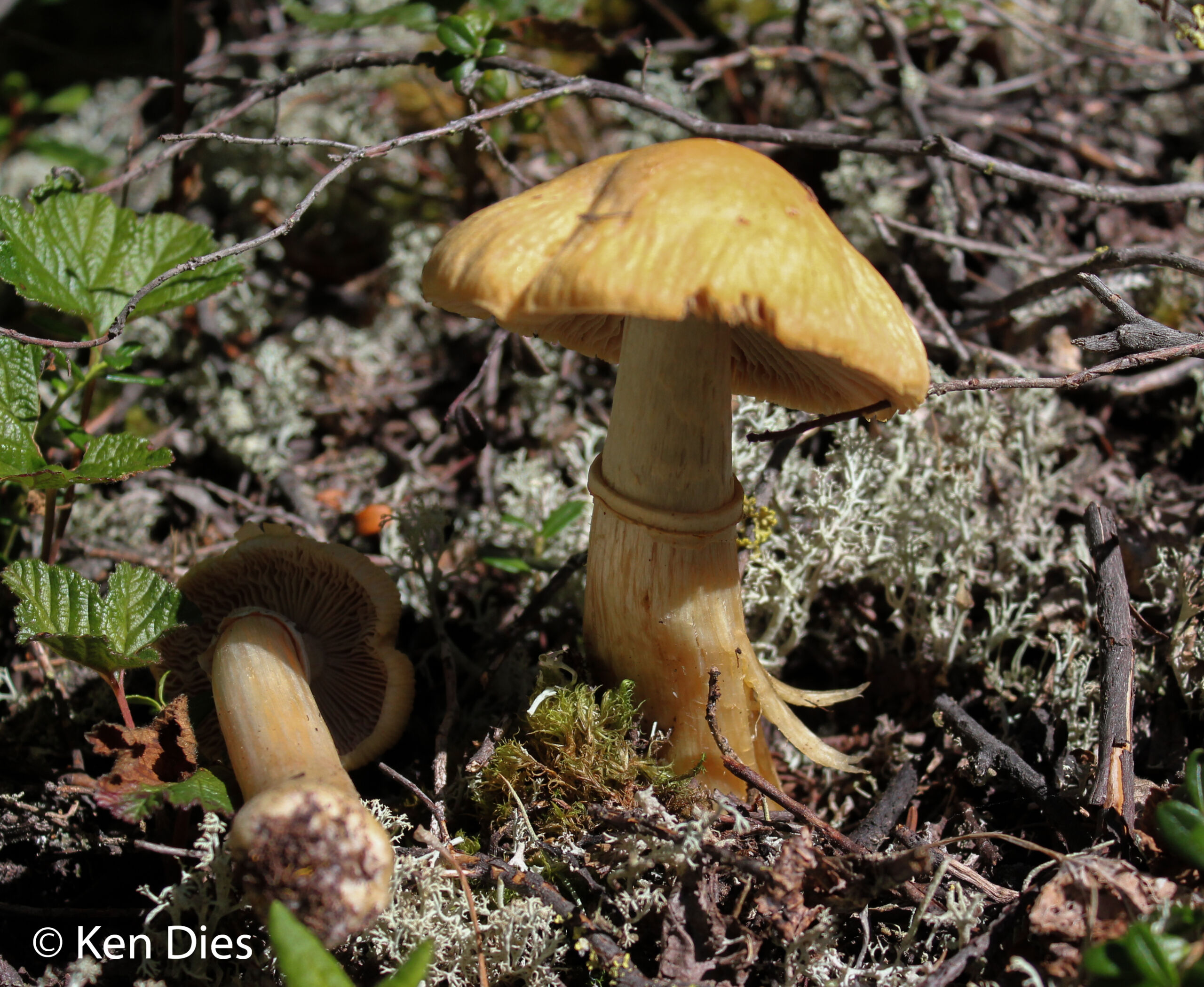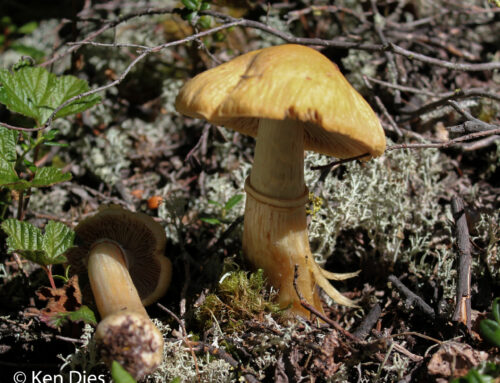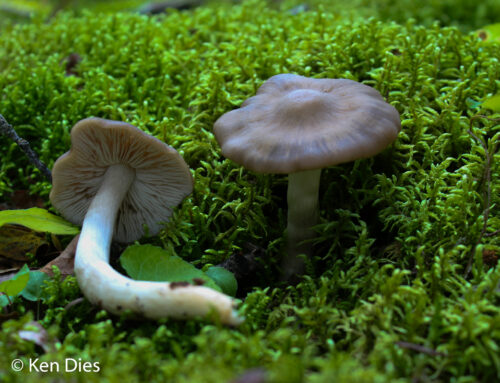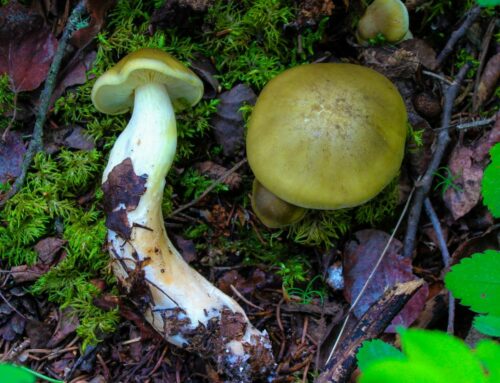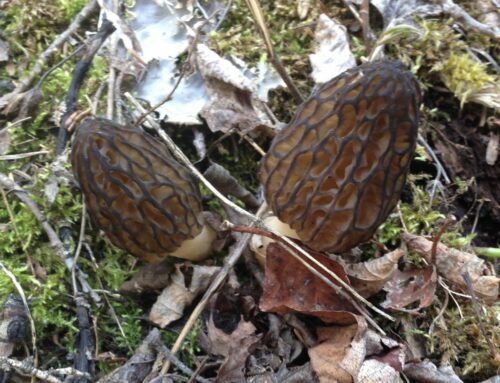- Species: C. caperatus
- Genus: Cortinarius
- Attributes
- Cap: radial striations, wrinkles, 5-15 cm broad
- Gills: short, adnexed
- Stem: membranous ring in middle of stem, 5-13 cm long, 1-2.5 cm thick
- Spore print: rusty brown
This lovely edible mushroom was long known as Rozites caperata before genetic studies revealed that it belonged to the genus Cortinarius. Its cap colour varies from middle brown to pale brown often with a whitish bloom. With age, it becomes radially wrinkled and may contain an umbo. Its close, short adnexed gills are pale at first, becoming brown or cinnamon brown, and when mature, they produce rusty brown spores. Its stem has a persistent, membranous white ring with yellow tones beneath, usually located just above the centre of the stem. Cortinarius caperatus, commonly known as the “Gypsy Mushroom,” is ectomycorrhizal with conifers and areas associated with the blueberry family. One of the most productive areas to collect these prize edibles is in black spruce bogs in mid-July through September. The specific epithet caperatus comes from the Latin adjective for “wrinkled,” a reference to the wrinkled or furrowed surface of most mature caps of this fungus. This mushroom is by far the most common Cortinarius species collected for the table here in Alberta.
